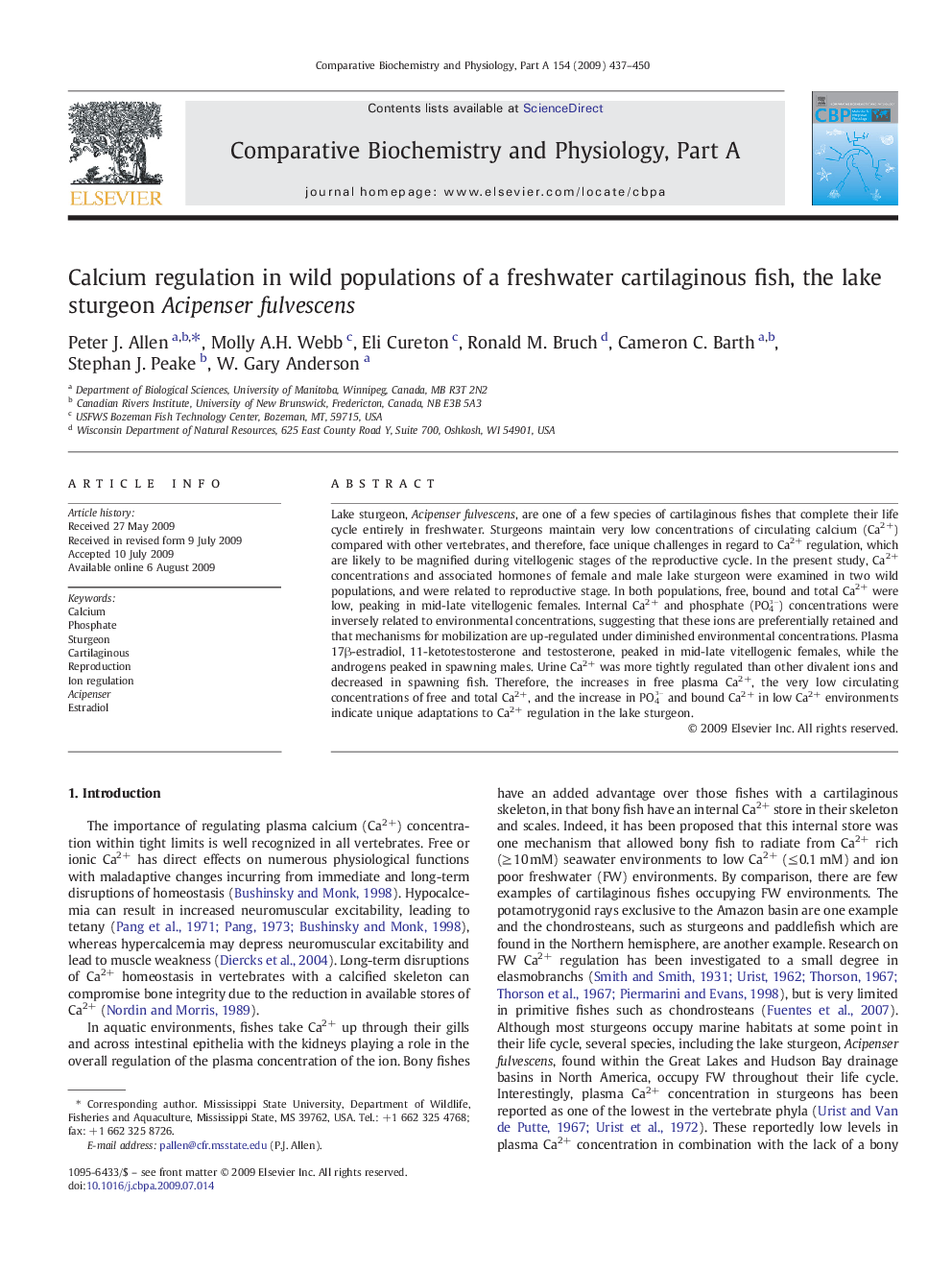| Article ID | Journal | Published Year | Pages | File Type |
|---|---|---|---|---|
| 1973175 | Comparative Biochemistry and Physiology Part A: Molecular & Integrative Physiology | 2009 | 14 Pages |
Lake sturgeon, Acipenser fulvescens, are one of a few species of cartilaginous fishes that complete their life cycle entirely in freshwater. Sturgeons maintain very low concentrations of circulating calcium (Ca2+) compared with other vertebrates, and therefore, face unique challenges in regard to Ca2+ regulation, which are likely to be magnified during vitellogenic stages of the reproductive cycle. In the present study, Ca2+ concentrations and associated hormones of female and male lake sturgeon were examined in two wild populations, and were related to reproductive stage. In both populations, free, bound and total Ca2+ were low, peaking in mid-late vitellogenic females. Internal Ca2+ and phosphate (PO43−) concentrations were inversely related to environmental concentrations, suggesting that these ions are preferentially retained and that mechanisms for mobilization are up-regulated under diminished environmental concentrations. Plasma 17β-estradiol, 11-ketotestosterone and testosterone, peaked in mid-late vitellogenic females, while the androgens peaked in spawning males. Urine Ca2+ was more tightly regulated than other divalent ions and decreased in spawning fish. Therefore, the increases in free plasma Ca2+, the very low circulating concentrations of free and total Ca2+, and the increase in PO43− and bound Ca2+ in low Ca2+ environments indicate unique adaptations to Ca2+ regulation in the lake sturgeon.
